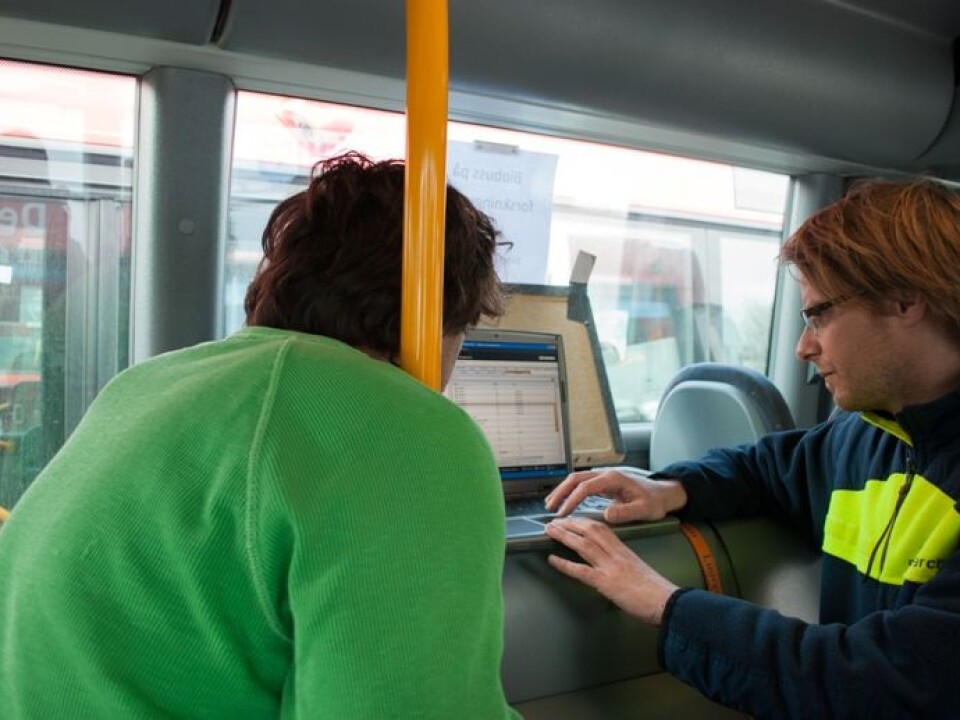This article was produced and financed by NILU - Norwegian Institute for Air Research

New technology reveals unknown pollutants
It is now possible to analyse organic pollutants in the atmosphere from an airplane at full speed, to study unknown chemical reactions in indoor air and to investigate a series of other dependencies of importance for environment and human health.
Denne artikkelen er over ti år gammel og kan inneholde utdatert informasjon.
A traditional method for measuring air pollutants is to direct air through a filter or cartridge for several minutes or even hours, and then analyse the captured compunds in the laboratory later on.
But pollutants can change rapidly, and traditional methods only give a single snap-shot from an extended period of time.
Armin Wisthaler is one of Europe’s most experienced experts in using a new instrument called PTR-TOF-MS (Proton- Transfer-Reaction Time-of-Flight Mass Spectrometer), that eliminates many of the old technologies’ weaknesses. It can detect volatile contaminants at unprecedented speed, including species that have never been detected before.
“The instrument can detect volatile organic compounds (VOC), both in indoor and outdoor air,” explains Armin Wisthaler.

“In the past samples have been analysed offline in the laboratory, but this instrument analyses the air quality immediately. We can for example place the instrument on board of an airplane, analysing the air continuously from its start until landing, from ground level up to flight altitude.”
Analysis as fast as lightning
In brief, the new instrument consists of a small reactor with negative pressure, which is continuously flushed with air. In the reactor water vapour molecules that carry an extra proton (H3O+) react as fast as lightning with organic compounds.
The organic compounds obtain a positive electric charge and can be analysed in a high resolution mass spectrometer, which gives immediate information about the atomic composition of the molecule.
“One of the advantages about this technology is that the analysis goes very fast while we are doing our field work. Another advantage is that we no longer need to treat the air samples before analysis. The new spectrometer has already detected many molecules that are usually so reactive that they are lost on filters or cartridges or during the traditional laboratory analysis," says the researcher.
"I believe that these compounds are very important, because due to their reactivity they may also cause a biologic response in humans, for example in the respiratory tract or the eyes. There is a theory that these compounds contribute to the increasing incidence of irritation symptoms, asthma and allergies in many parts of the world.”
Required big environment
The PTR technology has been developed for air sampling at the University of Innsbruck in the 1990s, where Wisthaler and a small group of physicists have been working for many years. The aim was to further develop this technology so that it could be used for atmospheric research.
In November 2011 he came to NILU to fully exploit the potential of this technology in a big center for air research with colleagues that can stimulate each other and develop new ideas.
“In Innsbruck we were a small and exotic group of scientists at an institute that was actually working with other things,” he says.
Indoor air environment is more important than you think
Wisthaler is full of ideas on how the PTR-technology can be used for practical surveillance of the environment and for new research projects.
“We can for example examine if there are any unknown compounds in the exhaust of busses driven by bioethanol. We can also analyse the air that you breathe in and out to find out what kind of organic molecules have been taken up from your body. I am very interested in looking closer at indoor air pollution, which is probably more important than many might think," he says.
People spend most of their time indoors and many common building materials release chemical compounds that researchers know little about. In addition, many of these compounds undergo chemical transformations in the indoor environment - forming highly reactive species which have been overlooked in the past.
"If I turn on the instrument inside my office or at the lab, I can see immediately that the air contains at least 100 different substances we know nothing about. I believe it is very important to develop more knowledge about indoor air pollution,” declares Wisthaler.
































